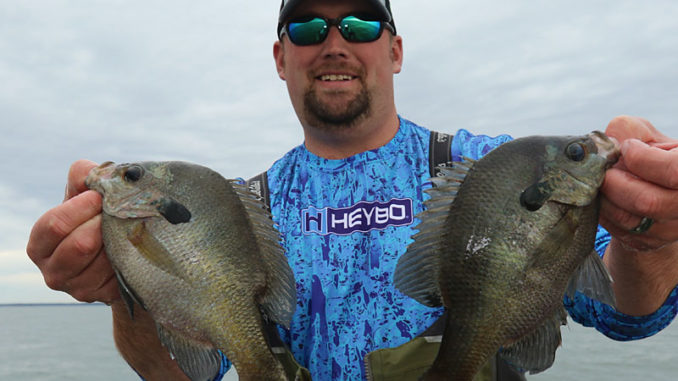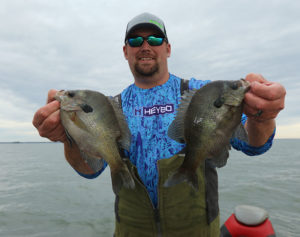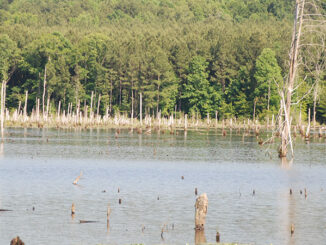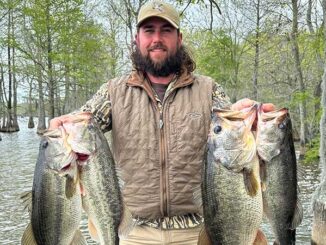
November bream fishing is outstanding
Bream fishing is over until spring, and it has been since early fall. At least that’s a long-held myth among most anglers. But November is a great time for catching bluegills, especially on Santee-Cooper’s lower lake, Moultrie.
Pro angler Matt Outlaw of Outlaw Outdoors Guide Service loves November bream fishing. He said the key to catching these panfish is to forget about the shallow water and fish deep — sometimes as deep as 60 feet.
Outlaw said he and guide Joseph Dennis of Captain J Hook Charters first started catching November bream by accident.
“We were fishing deep for crappie with small minnows, and every now and then, we’d catch a bluegill,” he said. “So we started bringing crickets and using them in the same spots we crappie fish. It worked like a charm. But on some days, you’ll catch just as many bluegills as crappie, even when using only minnows.”
Finding fish is a matter of watching your electronics; locating deep holes with clusters of fish is necessary before wetting a line.
Electronics are essential for bream this time of year
“It will look like big schools of crappie or big bait balls; sometimes that is what it is,” he said. “It’s the only way to find them this time of year; bait balls will move much more quickly. We’ve found that bream and crappie are right there together in many holes. They may not be exactly on top of each other, but they are close enough that you’ll catch some of both species,” he said.
Once Outlaw (803-413-8236) finds a school of bream, he drops crickets threaded onto 1/16-ounce jigheads straight down on long panfish poles. About 18 inches above the jig, he adds 1/2- to 1-ounce egg sinkers to get them down quickly. He often uses six to eight poles, placing them in rod holders on the bow of his boat. While waiting for a bite, he sometimes uses a small, ultralight rod to drop another bait down or to jig vertically for a reaction strike.

He said the first thing anglers notice about these bream is how healthy they are.
“These fish are thick-bodied. You won’t catch any small fish out here this time of year. Even the shortest fish are very healthy, very thick,” said Outlaw, who says November is just the start of things.
“They’ll bite throughout the winter in these deep holes, and they are very predictable. Even when we have some warm spells, the cold water keeps these fish in deep holes. No matter how unstable the weather may be, you’ll find them anywhere from 30 to 60 feet deep, and they are in big schools.”
Outlaw said sometimes anglers can find a deep hole full of bream, but not get a bite.
“Sometimes that happens, so it’s good to keep track of a number of different holes, and when you find a good spot but can’t get a bite, leave it for another,” Outlaw said. “But always come back to that hole later in the day. Thirty minutes, two hours — whatever it is, you’d be surprised at how hot the bite can turn on if you leave them alone and come back.”





Be the first to comment